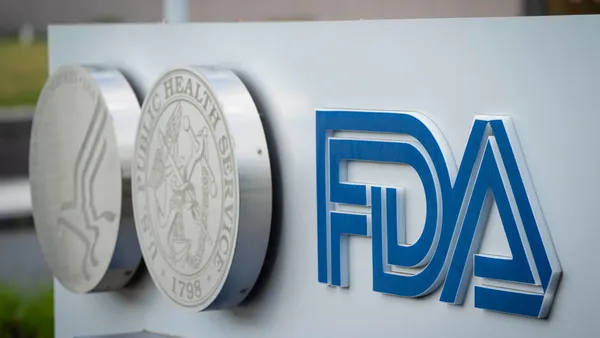20 June 20 08 VIEW on Clinical Operations CLINICAL TRIALS I s the industry ready to change its long entrenched and inefficient approach to implementing clinical trials? We think so. We’ll leave the good science to the scientists, however, the time is here to drop the rhetoric and apply smarter strategic thinking, predictability, and execu tion to the clinical trial process. Pharma is in acute pain. Today’s obsolete approach to clinical trials is causing a big headache. Only a more intelligent approach to an ingrained trial process can bring relief. As the FDA aggressively asserts its oversight of the clinical trial protocol planning process and mandated Phase IV commit ments to obtain a new drug approval, it behooves the industry to leverage the momentum to get in front of the crowd and to be proactive rather than reactive. This not just about innovation, which is necessary for change, it is about “going beyond the protocol,” turning the status quo of planning and man aging clinical trials on its head. Many believe that drug innovation alone is key for growth, however, we bear witness to the truth spoken by Bill Gates: “innovation applied to inefficient models, magnifies the inefficiencies.” The industry needs real change, not just a changing cast of characters with little originality. Pharma needs improved strategic and tactical models applied to clinical trials to gain: # A tighter grasp on the real costs of inefficiency # Better predictability of success and failure # Authentic trial acceleration Today’s Harsh Reality Drug development investment, timelines, and costs have increased at an unprecedented rate. According to a 2006 report, at least 60% of the total $51 billion R&D budget was being spent on clinical trials. (Refer to Drug Development Investment chart opposite page.) In 2007, America’s bio pharmaceutical research companies invested a record $58.8 billion on R&D, which is an increase of $7.8 billion in just two years. (Refer to Biopharma ceutical Companies’ Investment chart opposite page.) By 2010, 50% of R&D will be outsourced to suppliers. While development spending is escalating at alarming rates, the indus try has had to tighten its belt. Cost cutting, job eliminations, strategic alliances, and major acquisitions have become the rule. Although the clini cal trial area of drug development ultimately makes or breaks a new approval, ironically it is the trial budgets that typically get the short end of the stick. One only has to respond to a request for proposal to be informed by a clinical team that monies are “tight” and optimal strategies for ontime trial completion may go by the wayside. And, yet, many are still confounded as to why it still takes on average a decade or more to get a drug to market. Trial tribulations do not end there. According to CISCRP, 72.1% of stud ies are delayed by more than a month and delays in studies can cost life sciences companies at least $800,000 a day in lost sales for a niche medi cation, and $5.4 million a day for a blockbuster. Each day gained contributes an additional $1.1million in daily prescription revenue for an average per forming drug, according to Tufts’ research. Considering these statistics, is change merely an option, or a requisite for survival? Delays to market frustrate many constituents beyond the industry itself, including prescribers, the very community the industry desires to satisfy; patients who want cures but increasingly distrust the industry for highcost medicines and recalls; even shareholders, more than ever, are paying atten tion to clinical trial results. The time is ripe for change in the way the industry approaches the completion of clinical trials. It’s time to go beyond the protocol and embrace a newer way of thinking and planning for a trial. What Are Intelligent Trials and Why Do We Need Them? Simply put, intelligent trials wed good scientific discovery with flawless execution. Historical evidence suggests that companies are excellent at the science of clinical trial conduct and abysmal at the execution. In more com plex terms, intelligent trials are a holistic approach to addressing: 1) the requirements of the study sponsor in validating its science; 2) the needs of the physician in providing options to patients; and 3) the desire of patients for better treatments or cures, whereby the whole system of values are analyzed rather than simply its individual components. Qualified patients are increasingly difficult to attract, investigators are often overused and poorly managed, technology has not been harnessed efficiently, and inefficiencies in study management have become the norm. This has led to an increase in delays to completing important clinical trials, according to a CenterWatch 2008 report, by as much as 90%. How Do Intelligent Trials Work? Intelligent trials begin with the understanding that the study protocol is the “what needs to get done” and the trial strategy is the “how it will be Iris Global Clinical Trial Solutions Intelligent Trials: A New Approach or an Oxymoron? Kathleen Drennan Managing Director The willingness to go beyond the protocol with proactive strategic planning is the first step in a more intelligent approach to clinical trials. 0608 pvv layout FINAL 5/29/08 11:44 PM Page 20 21 VIEW on Clinical Operations June 20 08 CLINICAL TRIALS accomplished.” Trial protocols are focused on the science, with execution logistics relegated to a later time usually when it is too late to make neces sary changes. Intelligent trials incorporate the strategy and logistics of execu tion, up front, and they are based on qualitative and quantitative information critical to guiding the trial’s success. Three major components make up intelligent trials: 1. The discipline of early strategic thinking and planning applied to market ing communications in the clinical trial arena. 2. A roadmap that identifies and forecasts the most efficient and effective use of resources, technology and people. 3. The stewardship of multifaceted operational teams, systems, measures, and service providers. Most study protocols are developed with the drug’s science in mind, but with little forethought as to how the protocols may play in the real world of physicians and patients.There might be some thought given to feasibility, but true market research to obtain behavioral insight as to what barriers may likely prevent or motivate patients from actually qualifying and participating in trials is rare. In fact, most study designs are developed from past protocols. Though comfortingly familiar, replicating past procedures perpetuates their inefficiencies. It is essential to reach beyond the protocol to develop a trial relevant and disciplined strategic plan that incorporates the known or pre dictable needs of patients and physicians for the indication being studied.The needs revealed may require specialized and differentiated communication plans, which may include targeted media and creative branding elements for patient recruitment purposes. Proven tactics, such as websites for study patients and physicians, are now gaining momentum. Programs such as these, unless planned and managed with insight and knowhow, cannot be effective. Good strategic plans should envelop the protocol rather than the protocol as the entire plan in isolation of executional tactics. Without a study roadmap to forecast the most efficient use of resources, the inefficiencies of clinical trials will continue unabated. One of the most obvious black holes of clinical trials today is the process surrounding site selection, training, and performance. It is an accepted industry practice to contract onethird to onehalf more sites, beyond what would be needed, in anticipation of nonperformance. Instead of changing this paradigm with needed training and accountability measures, large pockets of research dol lars are willingly spent in a neverending practice of “paying for nonperfor mance.” Surely, this is an antistrategy best practice. Delineating a roadmap consisting of optimal routes of execution and with predictable measures will ensure a better trial outcome. Finally, deliberate stewardship of the many teams, suppliers, and systems, round out the intelligent trial planning process. Most trials today are managed by wellintentioned teams whose gaps in resources preclude holding their multiple players accountable.The inefficiencies and redundancies are immea surable when trials go into rescue. New budgets have to be found in order to “redo” what could have been done right in the first place. The Proof is in the Pudding Intelligent trials work because they are designed to be tracked, managed, and measured with analytical outcomes directly tied to irrefutable return on investment (ROI). Intelligent trials have proven to: # Recruit, enroll and complete higher numbers of patients. # Reduce trial time by tracking study participants and modeling site per formance. # Deliver predictable results by benchmarking, measuring, and reporting relevant metrics — in real time providing direction, not hindsight. # Manage risk by identifying problems early to reduce patient drop out. # Accelerate trials by anticipating obstacles and responding with agility. Applying an intelligent approach to the complex process of clinical trial planning and management can garner rewards not just for the clinical and marketing teams responsible for trials, but also for the physicians and their patients who may participate. Intelligent trials offer trial customized market research, strategic planning, and targeted tactics not usually integrated into clinical trial planning and execution. This approach prevents common mis communications, potential missteps, and expensive inefficiencies in this pro cess.The willingness to go beyond the protocol with proactive strategic plan ning is the first step in a more intelligent approach to clinical trials. # IRIS GLOBAL CLINICAL TRIAL SOLUTIONS, an Omnicom Group Company, provides clinical trial expertise integrating patient recruitment, retention, and investigator site support services.The company’s Chicago and NewYork offices provide diversified global resources to pharmaceutical clients. For more information, visit iristrials.com or call 3124753628. Drug Development Investment Total Clinical Trials PreApproval (Phase IIII) Phases IIIb/IV 60% 40% $39.4 billion 12% 88% $23.9 billion Percent of total R&D Expenditure $1 billion to bring a new drug to market Sources: PhRMA.org Industry Profile 2006 Thompson CenterWatch analysis, 2004; BCC, 2006 $60 $50 $40 $30 $20 $10 $0 Expenditures ($ in billions) 1980 1985 1990 1995 2000 2004 2005 2006 2007** PhRMAMember Companies’ R&D Expenditures Biopharmaceutical R&D Expenditures* $2.0 $4.0 $8.4 $15.2 $26.0 $37.0 $47.6 $39.9 $51.8 $43.4 $56.1 $44.5 $58.8 Sources: Burrill & Company, analysis for Pharmaceutical Research and Manufacturers of America, 2008, PhRMA Annual Member Survey (Washington, D.C .: PhRMA 2008). * The “Biopharmaceutical R&D” figures include PhRMA research associates and nonmembers; these are not included in “PhRMA Member Companies’ R&D Expenditures.” PhRMA first reported these data in 2004. ** Estimated. Biopharmaceutical Companies’ Investment in R&D Remains Strong 0608 pvv layout FINAL 5/30/08 1:21 PM Page 21
An article from


Intelligent Trials: A New Approach or an Oxymoron?
Filed Under:
Research & Development








